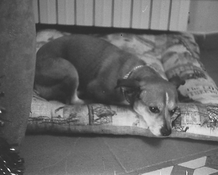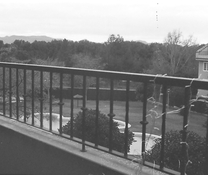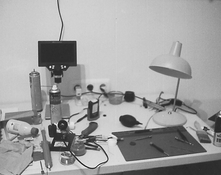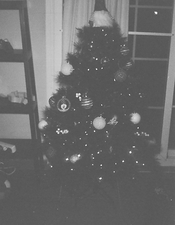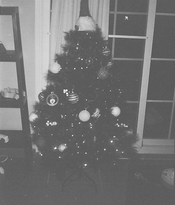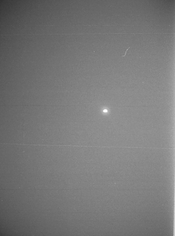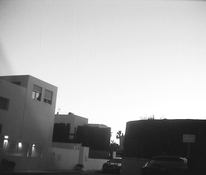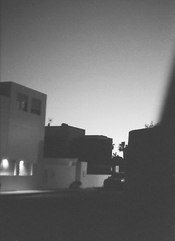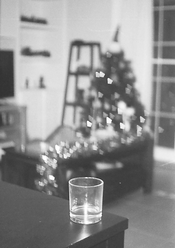Hello again !
This is a continuation of this article: Yashica Half 17 Rapid, sticky shutter complete teardown and rebuild
One of the problems with the Rapid system is finding cassettes. The camera I bought came with one, so I thought it would be possible to 3D print some cassettes with the correct tab lengths, corresponding with the ASA I usually shoot with, which are 400 and 125.
Here are the results of my first test...
(NOTE: This is a work in progress and will need a lot of work to get right but for being the first try, I am very satisfied with results).
Step 1: Obtained the original STLs from here: https://www.thingiverse.com/thing:5843148
I printed a few, but quickly realized that it's almost impossible for plastic to withstand the pressure of the backdoor spring clips, that were designed to keep the original metal cassettes in place. So I hacked the design and came up with this first working prototype:
Step 2: Hacked the original design in my favourite 3D CAD: (Shaprd3D on iPad)
I removed the original fixed tab and created a better slope, so that the camera's lever is fully pressed inwards (unlocked), before it is pressed downwards.
I left a pocket to later glue tab, which I printed separately.
Also, I designed a pickup lip which maintain an opening large enough for the film to pass onto the pickup spool. Without this, the plastic gets squeezed shut, and the film gets ruined.
Step 3: Print and Assemble the Cassettes:
a) Cut and separate about 15mm of the upper lip from the shut side:


b) Glue the Tab using a good PLA glue. I use SciGrip 16 Acrylics because it's the only glue I have found that glues PLA like a steel weld.

c) Glue a piece of felt on the inner lip of the cassette using contact cement. Make sure you don't saturate the felt but only speak glue thinly on the surface only.
NOTE: Although the felt worked OK, I need to find a better material than felt that doesn't release fibres and that doesn't absorb glue.

d) Glue a piece of felt to the inner film spring with contact cement. As in the previous step, you must wait at least 10 mins for the contact cement to fully dry before pressing on to the part.

e) Glue the spring to the main body of the cassette. Label the finished cassette according to the tab length you printed. In this case it's a 3.5mm tab corresponding to ASA 125



f) For the pickup cassette, follow the same procedure above as if making an ASA 400 (6mm tab) but without felt. Then glue the pickup lip as shown:

Step 4: Load the Film in a Loading Bag
Load 45 cm of film in a light proof loading bag just by pushing it into the cassette. I tried to load more, but it didn't work and 45cm is the limit for this design, which will give you 24 half frame shots (which was the natural capacity of these cameras anyway).
RESULTS
As mentioned at the beginning, I was not expecting much from this first experiment. I just wanted to test the camera and see if actually took good pictures after the overhaul and if the flash unit was actually firing in correct sync. I was honestly impressed at the results because I got 22 good frames with very little wasted film.
The cassettes did not do so well and heavily deformed after 2 days under pressure from the springs. I may have to modify the camera itself to use these plastic cassettes, or work on a completely new design. Also, the felt was very dirty so I need to find something better. Overall, the experiment was a success and I will continue to iterate over this and perfect it over time.
I will post the pictures as a reply to this thread because of the 15 image limit..
Enjoy, and Merry Christmas !
--
Alex
This is a continuation of this article: Yashica Half 17 Rapid, sticky shutter complete teardown and rebuild
One of the problems with the Rapid system is finding cassettes. The camera I bought came with one, so I thought it would be possible to 3D print some cassettes with the correct tab lengths, corresponding with the ASA I usually shoot with, which are 400 and 125.
Here are the results of my first test...
(NOTE: This is a work in progress and will need a lot of work to get right but for being the first try, I am very satisfied with results).
Step 1: Obtained the original STLs from here: https://www.thingiverse.com/thing:5843148
I printed a few, but quickly realized that it's almost impossible for plastic to withstand the pressure of the backdoor spring clips, that were designed to keep the original metal cassettes in place. So I hacked the design and came up with this first working prototype:
Step 2: Hacked the original design in my favourite 3D CAD: (Shaprd3D on iPad)
I removed the original fixed tab and created a better slope, so that the camera's lever is fully pressed inwards (unlocked), before it is pressed downwards.
I left a pocket to later glue tab, which I printed separately.
Also, I designed a pickup lip which maintain an opening large enough for the film to pass onto the pickup spool. Without this, the plastic gets squeezed shut, and the film gets ruined.
Step 3: Print and Assemble the Cassettes:
a) Cut and separate about 15mm of the upper lip from the shut side:
b) Glue the Tab using a good PLA glue. I use SciGrip 16 Acrylics because it's the only glue I have found that glues PLA like a steel weld.
c) Glue a piece of felt on the inner lip of the cassette using contact cement. Make sure you don't saturate the felt but only speak glue thinly on the surface only.
NOTE: Although the felt worked OK, I need to find a better material than felt that doesn't release fibres and that doesn't absorb glue.
d) Glue a piece of felt to the inner film spring with contact cement. As in the previous step, you must wait at least 10 mins for the contact cement to fully dry before pressing on to the part.
e) Glue the spring to the main body of the cassette. Label the finished cassette according to the tab length you printed. In this case it's a 3.5mm tab corresponding to ASA 125
f) For the pickup cassette, follow the same procedure above as if making an ASA 400 (6mm tab) but without felt. Then glue the pickup lip as shown:
Step 4: Load the Film in a Loading Bag
Load 45 cm of film in a light proof loading bag just by pushing it into the cassette. I tried to load more, but it didn't work and 45cm is the limit for this design, which will give you 24 half frame shots (which was the natural capacity of these cameras anyway).
RESULTS
As mentioned at the beginning, I was not expecting much from this first experiment. I just wanted to test the camera and see if actually took good pictures after the overhaul and if the flash unit was actually firing in correct sync. I was honestly impressed at the results because I got 22 good frames with very little wasted film.
The cassettes did not do so well and heavily deformed after 2 days under pressure from the springs. I may have to modify the camera itself to use these plastic cassettes, or work on a completely new design. Also, the felt was very dirty so I need to find something better. Overall, the experiment was a success and I will continue to iterate over this and perfect it over time.
I will post the pictures as a reply to this thread because of the 15 image limit..
Enjoy, and Merry Christmas !
--
Alex
Last edited:





